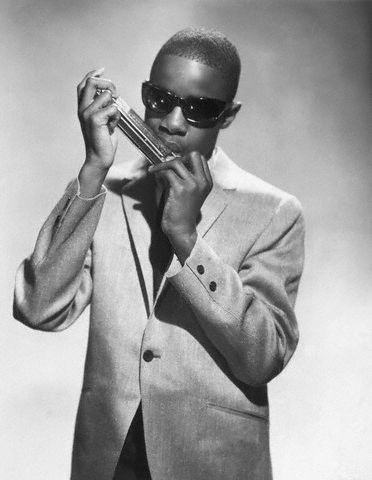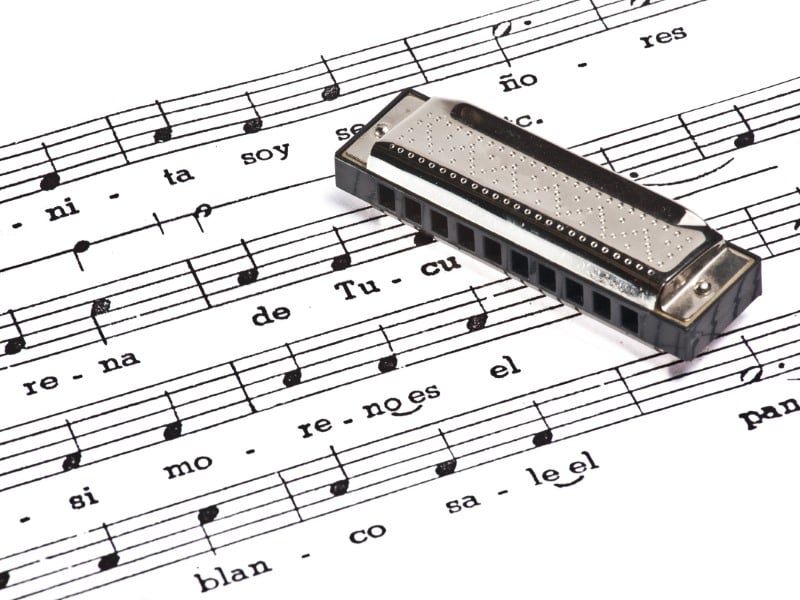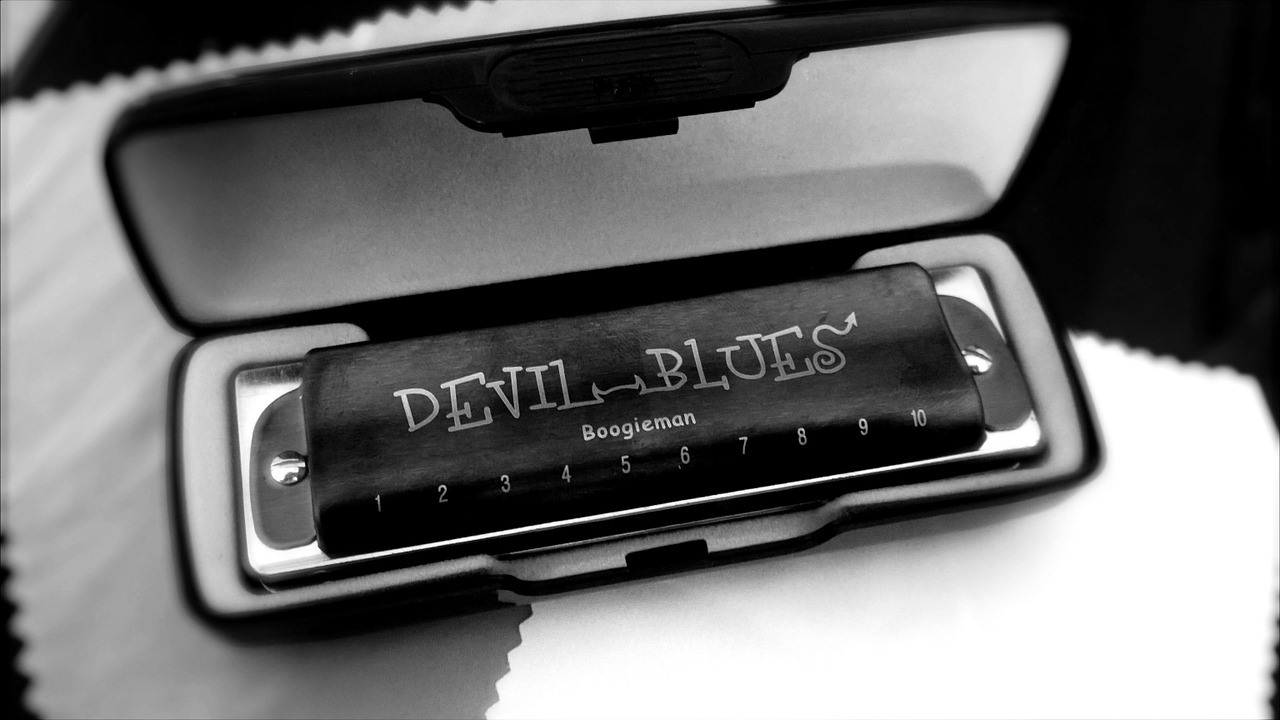Diatonic and Chromatic Harmonicas
The two main types of harmonicas are the diatonic harmonica and the chromatic harmonica. The diatonic harmonica is used most often in the country, folk, blues, and rock music. The diatonic doesn’t have natural access to all possible notes, but these notes can often be found by bending specific draw and blow notes. This bending is one of the attractive elements of a diatonic harmonica. There have been several famous diatonic harmonica players throughout history, including Bob Dylan, James Cotton, Mick Jagger, and Steven Tyler. The chromatic harmonica is used for classical, pop, and jazz music. The chromatic harmonica has a side button that allows the player to reach the half steps in between a normal major scale when it’s pressed, giving the player access to a spectrum of notes but not the bending that can be done with the diatonic. Stevie Wonder and Larry Adler are two famous chromatic harmonica players.

Cleaning
Musicians’ views differ on harmonica cleaning: Some clean them often, and some never clean them. In many cases, a musician will need a new one before the old one needs a significant cleaning, but cleaning is a good idea if the harp comes used or has been out of commission for a long time. A diatonic harmonica can be cleaned with lukewarm water if it has a plastic comb. Simply run some water through it and then tap it firmly on your leg to release excess water. Water should not be used on harmonicas that have wood or metal combs. A more thorough cleaning requires disassembling the harp and cleaning it with soap, warm water, and a toothbrush. If the comb is metal or wood, the water and soap can be eliminated and the harp can be dry-scrubbed with a toothbrush. The harp should be allowed to dry completely before reassembly to avoid rust.
Problems
As with all instruments, harmonicas sometimes run into problems. If a note that has always been producible suddenly isn’t, chances are good that something is caught in the reed. This could be moisture that can easily be dislodged with a tap on the palm of the hand and then rapidly breathing in and out over the hole that is blocked. If that doesn’t fix the problem, a toothpick can be used to poke at the reed.
If a note will only work with light breath, this means the gap found between the reed plate and the reed is too small. This can be fixed by increasing the gap. After removing the cover plates, take a toothpick and gently press the middle of the reed to push it away from the plate. Don’t push too hard, though, as you don’t want to damage the reed.
If a note just sounds bad, that probably means the reed has cracked. This is the point at which a new harmonica must be purchased. Usually, a harmonica will last six months to a year with regular play.
Modifications
Harmonicas have grown in popularity over the years, so finding someone qualified to repair or modify them is much easier than it used to be. A modification that is often done is sealing the comb and adding screws to a Hohner Marine Band to make it more airtight. This makes the notes easier to bend. Arcing and corner-rounding are other common modifications. Arcing is removing the manufacturer-placed arc on the reed. Corner-rounding is rounding the edges on the reed. Some musicians claim that this makes the instrument more responsive to the player.
Positions
To achieve different keys on a diatonic harmonica, the player uses different playing positions. There are 12 keys and, thus, 12 different playing positions. A C in the key of C is called the first position. Cross harp is the second position; this is when the song is in C and the harmonica is in F. Cross harp is frequently used in blues songs.

Bending
Bending is a technique through which different notes can be reached on a diatonic harmonica. It is done through manipulation of the tongue, throat, and lungs to change the air pressure across the reed.
Amplification
Amplification became a standard part of harmonica sound through the work of Sonny Boy Williamson, Big Walter Horton, and Little Walter. They used bullet microphones because they were inexpensive and accessible at the time.
Tips
It’s fairly simple to keep your harmonica in great shape for as long as possible. Keep the reeds clean. Keep the instrument in a box when not being played. And tap the harmonica gently after use to remove excess moisture.


